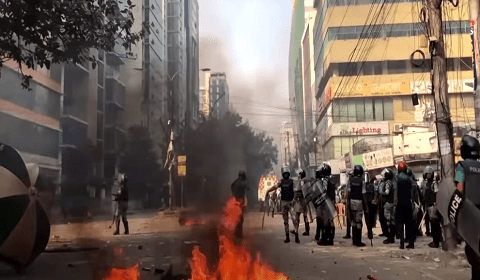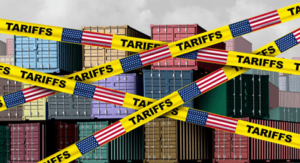
Bangladesh Political Unrest
Bangladesh political unrest can significantly disrupt its economic landscape. The economic impact of any political upheaval in Bangladesh can be evaluated through lead, lagged, and coincidental economic variables. Lead variables predict potential impacts, while lagged variables show the effects after they’ve occurred.
However, identifying coincidental variables, which provide real-time insights into the economic shock, is challenging in developing countries like Bangladesh. The intricate relationship between political instability and economic variables underscores the need for a comprehensive understanding of these dynamics to gauge the immediate and future repercussions on Bangladesh’s economy.
Table of Contents
Bangladesh Political Unrest
Bangladesh political unrest has cast an enduring shadow over its economic landscape, stirring deep concerns and triggering a ripple effect across multiple sectors. The increasing tensions have led to a dire economic situation, exacerbating existing vulnerabilities that have been worsened by global crises such as the COVID-19 pandemic and geopolitical conflicts.
The nation is grappling with depleting reserves, widening deficits, a sharp decline in exports—particularly from crucial sectors like ready-made garments—and shrinking remittances.
These economic repercussions of the ongoing turmoil loom ominously, highlighting Bangladesh’s economic fragility and the delicate balance between political stability and sustainable economic growth. This landscape is now fraught with challenges and uncertainties, emphasizing the intricate interplay between political stability and the country’s economic well-being.
1. Economic Fragility
The South Asian economy, notably Bangladesh, grapples with intricate challenges, including Bangladesh political unrest. COVID-19’s global ripples and the Ukraine conflict and Gaza war strain its stability. These impacts manifest in dwindling foreign reserves, surging inflation, and a heavy dependence on financial aid, exemplified by the administration’s pursuit of a $4.7bn IMF loan.
Such strains underscore a pressing need for strategic economic measures to mitigate vulnerabilities and foster sustainable growth, emphasizing the urgency of prudent financial management and diversified economic strategies amid the intricate web of global uncertainties.
2. Dwindling Reserves and Deficits
Bangladesh’s economic indicators are concerning. In the July-September quarter, the balance-of-payments and current-account deficits surged to $2.8bn and $3.93bn, respectively. Foreign currency reserves plummeted to $20.66bn, heightening worries about economic stability.
These alarming trends, coupled with ongoing Bangladesh political unrest, reflect growing challenges, highlighting the urgency for corrective measures to address the widening deficits and dwindling reserves, crucial for maintaining a stable economy.
Immediate attention and strategic financial planning are imperative to mitigate risks and bolster Bangladesh’s economic resilience amid these concerning developments.
3. Export Woes
The economic landscape faces a profound shift as vital contributors, notably the ready-made garments sector, grapple with adversity amidst Bangladesh political unrest. Exports, a cornerstone, plunged by 13.64 percent, marking a 26-month nadir at $3.76 billion.
This downturn has ripples—crippling the income stream and amplifying economic vulnerability. The once-thriving engine of the RMG sector now confronts challenges, casting shadows on broader economic stability.
Addressing this decline necessitates strategic interventions, safeguarding pivotal sectors and fortifying income channels. Restoring export vigor emerges as a critical imperative, heralding resilience and fostering a path towards economic resurgence.
4. Remittances and Blockades
Remittances, a lifeline for the economy, dropped 4.4% last quarter. Simultaneously, Bangladesh political unrest and persistent blockades cause immense daily losses of 65 billion takas ($588m), impacting businesses across sectors.
This decline in vital financial inflows alongside the disruptive economic toll amplifies concerns, underscoring the criticality of stable remittance flows and uninterrupted business operations.
5. Structural Weaknesses
Bangladesh’s economy grapples with inherent vulnerabilities: an overreliance on RMG exports, limited export variations, and heavy dependence on remittances. These structural weaknesses heighten susceptibility to external shocks, fostering economic instability.
Political tensions and crises compound these vulnerabilities, amplifying their impact. The nation’s economic fragility, stemming from these entrenched issues, underscores the imperative for diversified revenue streams and reduced reliance on singular sectors.
Addressing these structural flaws becomes pivotal in fortifying Bangladesh against unforeseen disruptions and cultivating a more resilient economic landscape.





